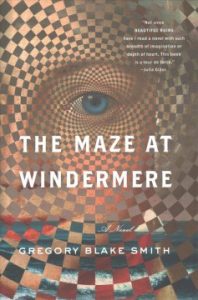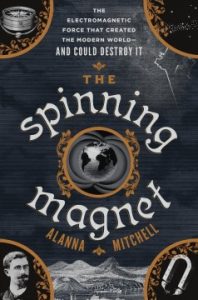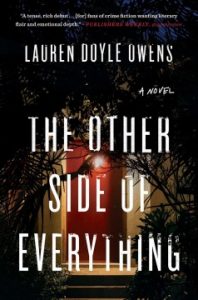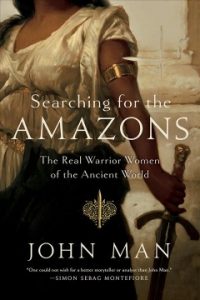It may not be as autumnal-looking here as it is in the Hundred-Acre Wood, but as I write this blog post dear readers, and listen to the wind whistle down Main Street, this is all I can think of:
So a very Happy Windsday to you all! Please be safe, and stay alert to any flood warnings and such. Otherwise, we plan to be open according to our normal hours (though you can always call our Main Number and double-check!), in case you find yourself in need of some new books or media to while away this dreary deluge of a weekend. Check out some of the new books that blew onto our shelves this week!

 The Maze at Windermere: One review compared Gregory Blake Smith’s new novel to a carousel ride–a magical blend of colors, faces, and narratives that swirl together to create an unforgettable and utterly enjoyable ride. Fans of books of novels with multi-generational protagonists will be delighted with this work, which examines the multi-layered lives lived in Newport Rhode Island. A reckless wager between a tennis pro with a fading career and a drunken party guest—the stakes are an antique motorcycle and an heiress’s diamond necklace—launches a narrative odyssey that braids together three centuries of aspiration and adversity. A witty and urbane bachelor of the Gilded Age embarks on a high-risk scheme to marry into a fortune; a young writer soon to make his mark turns himself to his craft with harrowing social consequences; an aristocratic British officer during the American Revolution carries on a courtship that leads to murder; and, in Newport’s earliest days, a tragically orphaned Quaker girl imagines a way forward for herself and the slave girl she has inherited. At once brilliantly artistic and utterly human, this novel earned a starred review from Publisher’s Weekly, who raved, “Taken individually, each story is dramatic and captivating, but as the author makes ever-increasing connections among the stories and shuffles them all into one unbroken narrative, the novel becomes a moving meditation on love, race, class, and self-fulfillment in America across the centuries.”
The Maze at Windermere: One review compared Gregory Blake Smith’s new novel to a carousel ride–a magical blend of colors, faces, and narratives that swirl together to create an unforgettable and utterly enjoyable ride. Fans of books of novels with multi-generational protagonists will be delighted with this work, which examines the multi-layered lives lived in Newport Rhode Island. A reckless wager between a tennis pro with a fading career and a drunken party guest—the stakes are an antique motorcycle and an heiress’s diamond necklace—launches a narrative odyssey that braids together three centuries of aspiration and adversity. A witty and urbane bachelor of the Gilded Age embarks on a high-risk scheme to marry into a fortune; a young writer soon to make his mark turns himself to his craft with harrowing social consequences; an aristocratic British officer during the American Revolution carries on a courtship that leads to murder; and, in Newport’s earliest days, a tragically orphaned Quaker girl imagines a way forward for herself and the slave girl she has inherited. At once brilliantly artistic and utterly human, this novel earned a starred review from Publisher’s Weekly, who raved, “Taken individually, each story is dramatic and captivating, but as the author makes ever-increasing connections among the stories and shuffles them all into one unbroken narrative, the novel becomes a moving meditation on love, race, class, and self-fulfillment in America across the centuries.”
 The Spinning Magnet: The Electromagnetic Force That Created the Modern World–And Could Destroy It : Well, there’s an attention-grabbing title for you! For anyone who found that unit on magnets in science class interesting, journalist Alanna Mitchell’s fast-paced and fascinating history of electromagnets is the book for you. And for all you science buffs and history enthusiasts who enjoy seeing the real-world applications of theories and the influence of historic figures, look no further! Mitchell roams through space and time to craft her story, from the thirteenth-century French investigations into magnetism and the Victorian-era discover that electricity and magnetism emerge from the same fundamental force–to the latest research into the Earth’s magnetic fields, which shows that our pole can reverse…often coinciding with periods of mass extinction….and that the Earth’s magnetic force field is decaying faster than previously thought. Nevertheless, there is a lot to enjoy here, and plenty to learn, not only about magnets and the people who love them, but about the planet that is still shifting and changing around us. Io9 broke with it’s tradition to feature this book, noting “We don’t usually feature nonfiction books on this list, but science journalist Mitchell’s narrative history of the science of electromagnetism—with a look toward the future and the imminent, inevitable reversing of the North and South Poles—sounds as thrilling as any scifi tale.”
The Spinning Magnet: The Electromagnetic Force That Created the Modern World–And Could Destroy It : Well, there’s an attention-grabbing title for you! For anyone who found that unit on magnets in science class interesting, journalist Alanna Mitchell’s fast-paced and fascinating history of electromagnets is the book for you. And for all you science buffs and history enthusiasts who enjoy seeing the real-world applications of theories and the influence of historic figures, look no further! Mitchell roams through space and time to craft her story, from the thirteenth-century French investigations into magnetism and the Victorian-era discover that electricity and magnetism emerge from the same fundamental force–to the latest research into the Earth’s magnetic fields, which shows that our pole can reverse…often coinciding with periods of mass extinction….and that the Earth’s magnetic force field is decaying faster than previously thought. Nevertheless, there is a lot to enjoy here, and plenty to learn, not only about magnets and the people who love them, but about the planet that is still shifting and changing around us. Io9 broke with it’s tradition to feature this book, noting “We don’t usually feature nonfiction books on this list, but science journalist Mitchell’s narrative history of the science of electromagnetism—with a look toward the future and the imminent, inevitable reversing of the North and South Poles—sounds as thrilling as any scifi tale.”
 The Other Side of Everything: For all that Lauren Doyle Owens’ debut novel is a crime thriller, it is also a very insightful exploration of the connections between neighbors, and the power of community to bind, as well as to separate. Bernard is a curmudgeonly widower who has lived alone in Seven Springs, Florida for decades. When his neighbor is murdered, he emerges from his solitude to reconnect with his fellow octogenarians. These connections become a literal lifeline as a second, and then a third, elderly woman is murdered. Amy is an artist and cancer survivor whose emotional recovery has not been as successful as her physical one. After the woman next door is murdered, she begins to paint imagined scenes from the murder in an effort to cope with her own loss. But her paintings bring the wrong kind of attention, isolating Amy in ways she never imagined. Finally, there’s Maddie, a teenage waitress coping with her mother’s abandoment and fighting to keep her family afloat, all the while being drawn to the man the authorities believe had a hand in the grisly crimes. As Bernard, Amy, and Maddie uncover the connections that bind them, this novel becomes much more than a traditional murder mystery, challenging genre conventions and readers’ expectations to create a book that is as compelling as it is original. Florida Weekly loved this book set close to home for them, saying in their review, noting that Owens’ “stunning literary murder mystery debut is at once a nail-biter and a brilliantly nuanced evocation of how communities work and don’t work….Ms. Owens builds a vibrantly realized world spreading across three generations. She traces the ebbs and flows of individual and collective destinies, her narrative charged by a lyricism that is constantly evocative and revealing.”
The Other Side of Everything: For all that Lauren Doyle Owens’ debut novel is a crime thriller, it is also a very insightful exploration of the connections between neighbors, and the power of community to bind, as well as to separate. Bernard is a curmudgeonly widower who has lived alone in Seven Springs, Florida for decades. When his neighbor is murdered, he emerges from his solitude to reconnect with his fellow octogenarians. These connections become a literal lifeline as a second, and then a third, elderly woman is murdered. Amy is an artist and cancer survivor whose emotional recovery has not been as successful as her physical one. After the woman next door is murdered, she begins to paint imagined scenes from the murder in an effort to cope with her own loss. But her paintings bring the wrong kind of attention, isolating Amy in ways she never imagined. Finally, there’s Maddie, a teenage waitress coping with her mother’s abandoment and fighting to keep her family afloat, all the while being drawn to the man the authorities believe had a hand in the grisly crimes. As Bernard, Amy, and Maddie uncover the connections that bind them, this novel becomes much more than a traditional murder mystery, challenging genre conventions and readers’ expectations to create a book that is as compelling as it is original. Florida Weekly loved this book set close to home for them, saying in their review, noting that Owens’ “stunning literary murder mystery debut is at once a nail-biter and a brilliantly nuanced evocation of how communities work and don’t work….Ms. Owens builds a vibrantly realized world spreading across three generations. She traces the ebbs and flows of individual and collective destinies, her narrative charged by a lyricism that is constantly evocative and revealing.”
 The Source : How Rivers Made America and America Remade Its Rivers: The North American continent has more than 250,000 rivers, coursing over more than 3 million miles. These waterways connect the disparate regions of the United States, commercially, culturally, and historically. Over the course of this nation’s history rivers have served as integral trade routes, borders, passageways, sewers, and sinks. Over the years, based on our shifting needs and values, we have harnessed their power with waterwheels and dams, straightened them for ships, drained them with irrigation canals, set them on fire, and even attempted to restore them. In this fresh and powerful work of environmental history, Martin Doyle tells the epic story of America and its rivers, from the U.S. Constitution’s roots in interstate river navigation, the origins of the Army Corps of Engineers, the discovery of gold in 1848, and the construction of the Hoover Dam and the TVA during the New Deal, to the failure of the levees in Hurricane Katrina and the water wars in the west. Along the way, he explores how rivers have often been the source of arguments at the heart of the American experiment―over federalism, sovereignty and property rights, taxation, regulation, conservation, and development. Kirkus Reviews really enjoyed this work, calling Doyle’s work “A vigorous look at American history through the nation’s waterways…Doyle speaks well to issues that are as pressing today as in the first years of the republic.”
The Source : How Rivers Made America and America Remade Its Rivers: The North American continent has more than 250,000 rivers, coursing over more than 3 million miles. These waterways connect the disparate regions of the United States, commercially, culturally, and historically. Over the course of this nation’s history rivers have served as integral trade routes, borders, passageways, sewers, and sinks. Over the years, based on our shifting needs and values, we have harnessed their power with waterwheels and dams, straightened them for ships, drained them with irrigation canals, set them on fire, and even attempted to restore them. In this fresh and powerful work of environmental history, Martin Doyle tells the epic story of America and its rivers, from the U.S. Constitution’s roots in interstate river navigation, the origins of the Army Corps of Engineers, the discovery of gold in 1848, and the construction of the Hoover Dam and the TVA during the New Deal, to the failure of the levees in Hurricane Katrina and the water wars in the west. Along the way, he explores how rivers have often been the source of arguments at the heart of the American experiment―over federalism, sovereignty and property rights, taxation, regulation, conservation, and development. Kirkus Reviews really enjoyed this work, calling Doyle’s work “A vigorous look at American history through the nation’s waterways…Doyle speaks well to issues that are as pressing today as in the first years of the republic.”
 Searching for the Amazons: The Real Warrior Women of the Ancient World: For as long as western civilization has known of them, we have been fascinated by accounts of the Amazons, an elusive tribe of hard-fighting, horse-riding female warriors. Described as equal to men in battle, legends claimed they cut off their right breasts to improve their archery skills and routinely killed their male children to purify their ranks. For centuries people believed in their existence and attempted to trace their origins through art, poetry, and archaeology. Now, John Man’s sweeping and beautifully-researched book traces the origins of the actual Amazons (who did indeed exist). This book not only sheds light on the history of the Amazons, but also of Man’s travels to the grasslands of Central Asia―from the edge of the ancient Greek world to the borderlands of China―to discover the truth about the truth about these women whose legend has resonated over the centuries. Kirkus Reviews also had praise for Man’s book, calling it “A great historical resource about a mysterious people that also shows how women, through the ages, have gathered strength from each other and continue to do so today.”
Searching for the Amazons: The Real Warrior Women of the Ancient World: For as long as western civilization has known of them, we have been fascinated by accounts of the Amazons, an elusive tribe of hard-fighting, horse-riding female warriors. Described as equal to men in battle, legends claimed they cut off their right breasts to improve their archery skills and routinely killed their male children to purify their ranks. For centuries people believed in their existence and attempted to trace their origins through art, poetry, and archaeology. Now, John Man’s sweeping and beautifully-researched book traces the origins of the actual Amazons (who did indeed exist). This book not only sheds light on the history of the Amazons, but also of Man’s travels to the grasslands of Central Asia―from the edge of the ancient Greek world to the borderlands of China―to discover the truth about the truth about these women whose legend has resonated over the centuries. Kirkus Reviews also had praise for Man’s book, calling it “A great historical resource about a mysterious people that also shows how women, through the ages, have gathered strength from each other and continue to do so today.”
Until next week, beloved patrons–Happy Reading!
